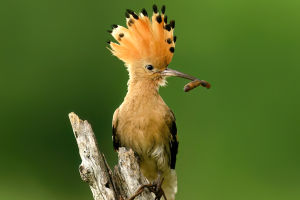If you've ever wondered about unique wildlife in South America, the guanaco is certainly one that deserves your attention. A member of the camel family, guanacos roam the arid, high-altitude regions of South America, particularly in countries like Bolivia, Peru, Chile, and Argentina.
These fascinating creatures are known for their agility, endurance, and distinct appearance. In this article, we’ll take a deep dive into everything we need to know about the guanaco, from its physical features to its habitat and behavior.
Where Do Guanacos Live?
Guanacos are native to South America's dry, mountainous regions, predominantly in the Andes' highlands. They thrive in areas such as the Altiplano Plateau across Bolivia, Peru, Chile, and Argentina. In Chile and Argentina, they are mostly found in Patagonia, where their numbers are relatively limited due to competition with domesticated animals like sheep and goats.
However, efforts are being made to protect and preserve them, especially by the indigenous communities in Bolivia who raise guanacos to maintain their population. Their numbers are estimated to be between 400,000 and 600,000, and they typically live for 20 to 25 years in the wild.
Physical Appearance and Adaptations
Guanacos are medium-sized animals, typically measuring between 1.07 to 1.22 meters at the shoulder and weighing around 90 kilograms. Their fur is predominantly light brown to dark cinnamon, with a gradual transition to white on their bellies. Their faces are gray, and their ears are small and upright. Large, brown eyes and a streamlined body shape contribute to their distinctive appearance. Notably, their ability to adapt to high-altitude environments is remarkable.
Guanacos can live at altitudes as high as 3,962 meters (about 13,000 feet), where oxygen levels are significantly lower. Their blood has a higher concentration of red blood cells, enabling them to survive in these low-oxygen areas.
Behavior and Social Structure
Guanacos are social creatures and live in groups, typically led by a dominant male. The group also includes several females and their offspring. When threatened, guanacos have an interesting defense mechanism: they spit and emit high-pitched sounds to warn the group of potential danger. In some cases, the dominant male may stay behind to protect the group while the others flee.
Despite their size, guanacos are excellent runners, capable of reaching speeds up to 56 kilometers per hour. Additionally, they are skilled swimmers, capable of crossing rivers and other bodies of water with ease.
Diet and Feeding Habits
Guanacos are herbivores and feed on a variety of plants found in their mountainous habitats. Interestingly, their diet consists of cacti, which provide them with essential nutrients. Their ability to digest such tough vegetation allows them to survive in the harsh conditions of the Andes. While they primarily feed on vegetation, their water intake comes from dew, rain, or the moisture in the plants they consume, making them highly adapted to their dry environment.
Reproduction and Lifespan
The breeding season for guanacos occurs between November and February. During this time, males compete fiercely for dominance, engaging in intense battles to display their strength and superiority. The gestation period lasts around 11 months, with females giving birth to one baby (known as a cria) at a time. Newborn guanacos are capable of walking immediately after birth, which helps them keep up with the group.
The male cria typically stays with the group until about one year old before becoming independent. In total, guanacos can live up to 20 to 25 years in the wild.
Special Features and Importance
Guanacos have thick, protective skin around their necks, which is particularly useful in defending against their only natural predator: the cougar. This unique feature is also found in their relatives, such as llamas and alpacas. In Bolivia, guanaco skin is sometimes used to make shoes due to its toughness and durability. Additionally, guanacos produce soft, warm wool, which is highly valued for its fine quality. Their wool is second only to that of alpacas and is often used as a substitute for fox fur in some regions, as it has a similar texture.
The Fascinating Guanaco
The guanaco, a majestic creature of the South American wilderness, continues to captivate the hearts of wildlife enthusiasts and researchers alike. With its fascinating behaviors, unique adaptations, and important ecological role, it remains one of the continent's most remarkable animals. So, next time you think of South America's wildlife, remember the guanaco—an animal that not only thrives in one ofthe harshest environments on Earth but also contributes to the region's natural beauty.
Have you ever seen a guanaco in the wild? Share your thoughts with us, and let’s continue exploring the wonders of the animal kingdom together!
GUANACOS: Research to Conserve | WCS Argentina
Video by Wildlife Conservation Society


